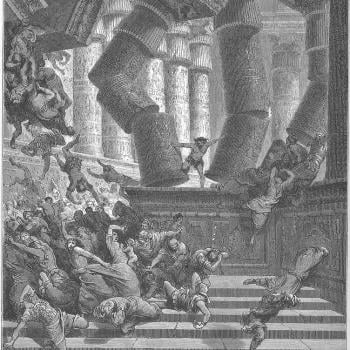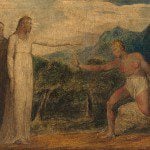
Ward Ricker is an atheist who (as so often) was formerly a self-described “fundamentalist”. He likes to poke holes in the Bible and “prove” that it is a terrible and “evil” book, not inspired, hopelessly contradictory, etc. He put together a 222-page book called Unholy Bible (2019): available for free as a pdf file. It contains 421 couplets of passages that he considers literally contradictory, and 256 more couplets of not technically contradictory but “problem” passages (according to him). Ward wrote in his book: “I . . . am including here only what I consider to be the more firm examples of contradictions. . . . I do not want to include examples that are ‘weak’ and will be easily refuted. I have made my best judgment.” Ward also wrote to me:
[M]any Bible critics (“atheists” or otherwise) will use some pretty ridiculous arguments . . . I have screened out those bogus claims that some critics make and have published my own book . . . of contradictions that I and others have found in the Bible that are clearly contradictions. (letter to National Catholic Register about one of my articles there; reproduced in my first reply)
He issued a challenge for anyone to take on his alleged contradictions. After my first reply, he wrote a 5 1/2 page article suggesting in-depth dialogue. I responded, explaining in depth why I thought dialogue between us would be unfruitful, for many reasons. He then accused me (among other things in his two replies) of “hypocrisy” that “knows no bounds.” This is, of course, against my discussion rules, which forbids such rank insults, so he was promptly banned from my blog, and I replied: “I was exactly right in my judgment that no dialogue was possible. It never takes long for the fangs to come out if they are there.”
But I had already stated: “I may still take on several of your proposed contradictions, just so I can have opportunity to show how very wrong atheist contentions are (which is one thing Christian apologists do).” This series represents that effort. Mr. Ricker can respond on his page as he sees fit. He can still see my posts. His words will be in blue. To search any of this series on my blog, paste “Ward’s Whoppers #” in the search bar on the top right of my blog page. He uses the King James Version for his Bible verses. I will use RSV in my replies.
*****
106.
1 Samuel 17: 50 So David prevailed over the Philistine with a sling and with a stone, and smote the Philistine, and slew him; but there was no sword in the hand of David.
Vs:
1 Samuel 17: 51 Therefore David ran, and stood upon the Philistine, and took his sword, and drew it out of the sheath thereof, and slew him, and cut off his head therewith. And when the Philistines saw their champion was dead, they fled.
Q: With which weapon did David kill Goliath?
***
This alleged difficulty is satisfactorily resolved, I think, by one of the apologists at the Domain for Truth website: “Bible Contradiction? How did David kill Goliath?” (9-20-16):
[W]orking with the Hebrew language is important because we must ask in what sense are the Hebrew verbs “kill” being used in both verse 50 and verse 51. . . .
In verse 50 the verb וַיְמִיתֵ֑הוּ for “kill” is in the Hiphil form. For those who know Hebrew it is common knowledge that Hiphil forms often convey the causative idea. Thus what the verb in verse 50 is telling us is that David caused Goliath’s death. The means that David used which began Goliath’s death is of course the slingshot.
In verse 51 the verb וַיְמֹ֣תְתֵ֔הוּ for “kill” is in the Polel form. It appears less frequently than the other verbal forms of מוּת. According to Old Testament scholar Robert Chisholm this verbal form has “a specialized shade of meaning, referring to finishing off someone who is already mortally wounded” (Chisholm, Interpreting the Historical Books, 172).
In light of the above understanding of the Hebrew verbal forms, we don’t have a contradiction. Again the Hiphil form of the verb “kill” in verse 50 tells us that David began the cause of Goliath’s death by means of the slingshot. Then in verse 51 the Polel form of the verb “kill” tells us how David finished off an already mortally wounded Goliath, namely with the sword. [my links to article about the two verb forms added]
The article also provides parallel verses. 2 Samuel 1:9-10 is about the death of Saul, who was mortally wounded in battle and then asked a soldier to kill him, to put him out of his misery. The two instances of “kill” in the passage also use the Polel form in the same sense as in the David and Goliath situation. Further verses that utilize the Polel form with regard to killing are 1 Samuel 14:13 and Judges 9:54. In the latter instance, a man’s skull was crushed with a big millstone (9:53), but someone thrust a sword into him to kill him.
Moreover, the scholarly work, 4QSamuela and the Text of Samuel (Jason Driesbach, 2016) verifies the above argument and the use of Polel form in 1 Samuel 17:51 and cites (in agreement with the above) further examples (on p. 84) of its use in 1 Samuel 4:13 and 2 Samuel 1:9-10, 16. Compare another biblical commentary (footnote 9a) on this very question.
***
Photo credit: David Slaying Goliath (1616), by Peter Paul Rubens (1577-1640) [public domain / Wikimedia Commons]
***













